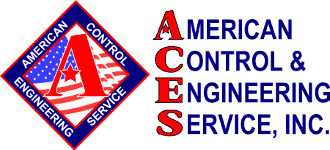THE MYSTERY
An ACES Control Systems Engineer was called to the scene of a violent crime: A forklift had rammed a control cabinet, which pushed the side of the cabinet into the terminals of a DC drive. The power arced to the cabinet wall and grounded, causing the electronics to smoke and burning out the DC drive.
The DC Drive controlled a motor powering a critical machine which cuts, stamps, folds, and glues flat sheets of corrugate into completed corrugate boxes. The CSI had to get the machine up and running fast.
THE CLUES
The job seemed straightforward: The customer had already mounted a new Eurotherm/Parker DC drive, and fortunately the logic module still functioned in the old drive, so all that remained was for the CSI to transfer the parameters from the old drive to the new.
Then came the complications. First, the CSI ascertained that the outdated software on the client’s computer wouldn’t communicate with the new drive, so he updated the customer’s software. Second, even after he uploaded and auto-tuned the parameters, the motor would not turn.
THE PERP
The CSI investigated the parameters in the old drive and found they were incorrect. They showed the motor armature should be operating at 100VDC and 1.2A when the correct operating voltage on the motor’s nameplate was 500VDC and 198A — the forklift mishap had discombobulated the drive’s memory.
THE SOLUTION
The CSI reprogrammed each parameter to the nameplate specs, and the motor jolted to life. He calibrated the tachometer to achieve 250 boxes per minute at peak production. When the operators fed more material through the machine it slowed down a bit, so the CSI fine tuned the drive. After a small modification the drive ran correctly and production began.
Case closed — or so the CSI thought.
THE NEXT MORNING, ANOTHER MYSTERY
Overnight the motor had stopped turning; it couldn’t handle the load. The CSI said to the operators, “This drive has nothing wrong with it, let’s test the motor again. You have a spare motor right?” Yes, they did.
THE CLUES
The CSI measured the field windings on the original motor and noted that the field coil was pulling more amps than it should. The field windings tested out to be 10 ohms in series. He tested the spare motor and discovered it was 60 ohms in series. So the field windings on the original motor were shot.
THE PERP
The CSI explains: “It’s common for DC motors to eventually have problems with brushes, but the windings are rarely damaged. What kills windings is excessive amperage leading to extreme heat, which destroys the insulation. When the insulation is damaged the current jumps past windings, you won’t get the field you’re supposed to, and your resistance goes down.
The motor could not produce enough torque to keep up with production; it was sent in for repair then returned to the customer as a spare.
THE SOLUTION
The CSI retuned the drive to the new motor, which then “rocketed off”, without requiring any modification. The operators ran the machine back up to maximum speed without any problem and the machine is now efficiently printing, cutting, folding and gluing at full speed.
